
Mrs. Perkins's Ball is a novel by William Makepeace Thackeray, published under the pseudonym "M. A. Titmarsh" in 1846.

Mrs. Perkins's Ball is a novel by William Makepeace Thackeray, published under the pseudonym "M. A. Titmarsh" in 1846.
Mrs. Perkins's Ball was published as one of many Christmas novels; it was Thackeray's first attempt in the genre and its initial print run sold only 1,500 copies. [1] In one review (written by Thackeray himself), he notes there were some 25 or 30 Christmas books published that season, including several illustrated by the "fast working" Isaac Robert Cruikshank. He then begins caustically reviewing Mrs. Perkins's Ball until, halfway through, he realizes in mock horror that he himself authored it and demands to "Kick old Father Christmas out of doors, the abominable old imposter! Next year I'll go to the Turks, the Scotch, or other Heathens who don't keep Christmas." [2] The book was, nevertheless, popular enough that American author Mark Twain may have used the title character as an inspiration for his first known pen name, W. Epaminondas Adrastus Perkins, affixed to an article of his in the Hannibal Journal for 9 September 1852. [3]

Charles John Huffam Dickens was an English novelist and social critic who created some of the world's best-known fictional characters, and is regarded by many as the greatest novelist of the Victorian era. His works enjoyed unprecedented popularity during his lifetime and, by the 20th century, critics and scholars had recognised him as a literary genius. His novels and short stories are widely read today.

Adventures of Huckleberry Finn is a novel by American author Mark Twain, which was first published in the United Kingdom in December 1884 and in the United States in February 1885.

William Makepeace Thackeray was an English novelist and illustrator. He is known for his satirical works, particularly his 1847–1848 novel Vanity Fair, a panoramic portrait of British society, and the 1844 novel The Luck of Barry Lyndon, which was adapted for a 1975 film by Stanley Kubrick.
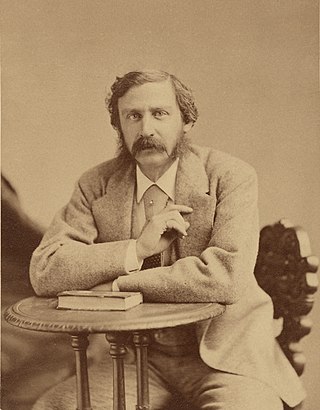
Bret Harte was an American short story writer and poet best remembered for short fiction featuring miners, gamblers, and other romantic figures of the California Gold Rush.

A Christmas Carol. In Prose. Being a Ghost Story of Christmas, commonly known as A Christmas Carol, is a novella by Charles Dickens, first published in London by Chapman & Hall in 1843 and illustrated by John Leech. A Christmas Carol recounts the story of Ebenezer Scrooge, an elderly miser who is visited by the ghost of his former business partner Jacob Marley and the spirits of Christmas Past, Present and Yet to Come. After their visits, Scrooge is transformed into a kinder, gentler man.

Samuel Langhorne Clemens, known by the pen name Mark Twain, was an American writer, humorist, essayist, entrepreneur, publisher, and lecturer. He was praised as the "greatest humorist the United States has produced", and William Faulkner called him "the father of American literature". His novels include The Adventures of Tom Sawyer (1876) and its sequel, Adventures of Huckleberry Finn (1884), with the latter often called the "Great American Novel". Twain also wrote A Connecticut Yankee in King Arthur's Court (1889) and Pudd'nhead Wilson (1894), and co-wrote The Gilded Age: A Tale of Today (1873) with Charles Dudley Warner.

Thomas Clayton Wolfe was an American novelist of the early 20th century.
This article contains information about the literary events and publications of 1885.
You don't know about me without you have read a book by the name of 'The Adventures of Tom Sawyer'; but that ain't no matter. That book was made by a Mr Mark Twain, and he told the truth, mainly.
This article contains information about the literary events and publications of 1863.
John Andrew Sutherland is a British academic, newspaper columnist and author. He is Emeritus Lord Northcliffe Professor of Modern English Literature at University College London.
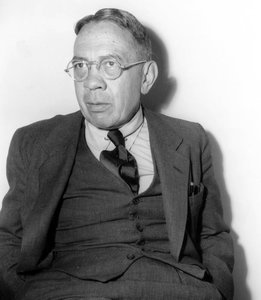
Bernard Augustine DeVoto was an American historian, conservationist, essayist, columnist, teacher, editor, and reviewer. He was the author of a series of Pulitzer-Prize-winning popular histories of the American West and for many years wrote The Easy Chair, an influential column in Harper's Magazine. DeVoto also wrote several well-regarded novels and during the 1950s served as a speech-writer for Adlai Stevenson. His friend and biographer, Wallace Stegner described DeVoto as "flawed, brilliant, provocative, outrageous, ... often wrong, often spectacularly right, always stimulating, sometimes infuriating, and never, never dull."
The Whole Family: a Novel by Twelve Authors (1908) is a collaborative novel told in twelve chapters, each by a different author. This unusual project was conceived by novelist William Dean Howells and carried out under the direction of Harper's Bazaar editor Elizabeth Jordan, who would write one of the chapters herself. Howells's idea for the novel was to show how an engagement or marriage would affect and be affected by an entire family. The project became somewhat curious for the way the authors' contentious interrelationships mirrored the sometimes dysfunctional family they described in their chapters. Howells had hoped Mark Twain would be one of the authors, but Twain did not participate. Other than Howells himself, Henry James was probably the best-known author to contribute. The novel was serialized in Harper's Bazaar in 1907–08 and published as a book by Harper's in late 1908.

Jane Lampton "Jean" Clemens was the daughter of Samuel Langhorne Clemens and Olivia Langdon Clemens. She drowned in a bathtub at Samuel's home on Christmas Eve 1909, likely due to a seizure.
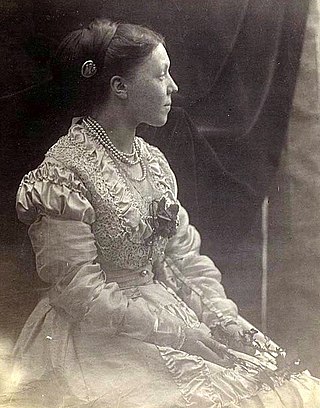
Anne Isabella, Lady Ritchie, eldest daughter of William Makepeace Thackeray, was an English writer, whose several novels were appreciated in their time and made her a central figure on the late Victorian literary scene. She is noted especially as the custodian of her father's literary legacy, and for short fiction that places fairy tale narratives in a Victorian milieu. Her 1885 novel Mrs. Dymond introduced into English the proverb, "Give a man a fish and you feed him for a day; teach a man to fish and you feed him for life."

Rebecca "Becky" Sharp, later describing herself as Rebecca, Lady Crawley, is the main protagonist of William Makepeace Thackeray's 1847–48 novel Vanity Fair. She is presented as a cynical social climber who uses her charms to fascinate and seduce upper-class men. This is in contrast with the clinging, dependent Amelia Sedley, her friend from school. Becky then uses Amelia as a stepping stone to gain social position. Sharp functions as a picara—a picaresque heroine—by being a social outsider who is able to expose the manners of the upper gentry to ridicule.
The Californian was a San Francisco literary newspaper published weekly from May 28, 1864 until February 1, 1868.
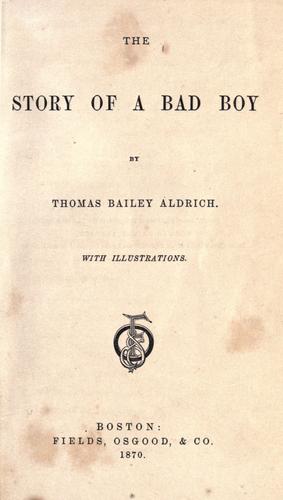
The Story of a Bad Boy (1870) is a semi-autobiographical novel by American writer Thomas Bailey Aldrich, fictionalizing his experiences as a boy in Portsmouth, New Hampshire. The book is considered the first in the "bad boy" genre of literature, though the text's opening lines admit that he was "not such a very bad, but a pretty bad boy".
A literary feud is a conflict or quarrel between well-known writers, usually conducted in public view by way of published letters, speeches, lectures, and interviews. In the book Literary Feuds, Anthony Arthur describes why readers might be interested in the conflicts between writers: "we wonder how people who so vividly describe human failure can themselves fall short of perfection."

Frank Thayer Merrill was an American artist and illustrator. He is best known for his drawings for the first illustrated edition of Louisa May Alcott's novel Little Women, published in 1880. Over a five-decade career, he illustrated a wide variety of works for adults and children.
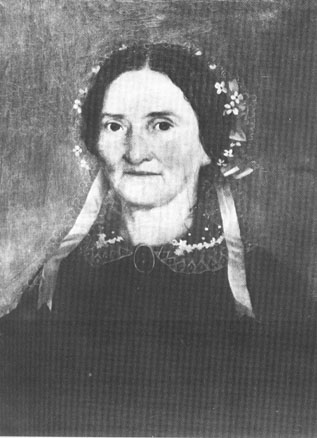
Jane Lampton Clemens was the mother of author Mark Twain. She was the inspiration of the character "Aunt Polly" in Twain's 1876 novel The Adventures of Tom Sawyer. She was regarded as a "cheerful, affectionate, and strong woman" with a "gift for storytelling" and as the person from whom Mark Twain inherited his sense of humor.
![]() Media related to Mrs. Perkins's Ball at Wikimedia Commons
Media related to Mrs. Perkins's Ball at Wikimedia Commons
Mrs. Perkins's Ball at Internet Archive